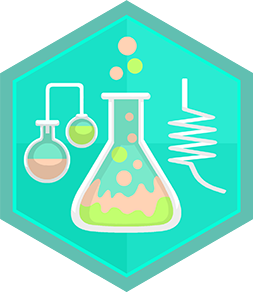Bounce Light in a Mirror Pathway
Build a mirror pathway to bounce a flashlight beam across angled mirrors, experimenting with reflection, angles, and target placement to learn light behavior.



Step-by-step guide to Bounce Light in a Mirror Pathway
Solve A Mirror Maze Reflection Challenge! | STEM Lesson Plan
Step 1
Turn off the room lights and close curtains to make the space dim for the light beam to show clearly.
Step 2
Place the small target paper or toy at the far end of your pathway and tape it down so it will not move.
Step 3
Put the flashlight at the starting point on the floor or table where you want the beam to begin.
Step 4
Turn on the flashlight so you can see and test the beam.
Step 5
Tape one mirror to a piece of cardboard to make a sturdy mirror stand.
Step 6
Set the first mirror stand halfway between the flashlight and the target and prop it upright with a book or box.
Step 7
Aim the flashlight so the beam hits the center of the first mirror.
Step 8
Watch where the reflected beam lands on the floor or wall.
Step 9
Mark the spot where the reflected beam lands using a piece of tape.
Step 10
Tape a second mirror to another piece of cardboard to make a second mirror stand.
Step 11
Place the second mirror stand on the spot you marked with tape.
Step 12
Use the protractor to measure the incoming beam angle at the second mirror.
Step 13
Slowly tilt the second mirror until the reflected beam reaches the target.
Step 14
Share a photo and a short description of your finished mirror pathway on DIY.org
Final steps
You're almost there! Complete all the steps, bring your creation to life, post it, and conquer the challenge!


Help!?
What can we use instead of a flashlight, mirror, cardboard stand, or protractor if we can't find those exact materials?
Use a smartphone flashlight in place of a flashlight, a compact mirror, shiny CD, or smooth aluminum foil for a mirror, a thick book or empty cereal box taped to the mirror instead of the cardboard stand used to make a sturdy mirror stand, and a printable protractor or a smartphone angle/level app instead of a paper protractor to measure the incoming beam angle at the second mirror.
Why won't the beam reach the target or it keeps missing the marked spot, and how do we fix it?
If the beam misses the target check that you aimed the flashlight so the beam hits the center of the first mirror as instructed, re-secure or straighten the taped mirror stands so the mirrors stay upright, darken the room more so the beam is visible, and slowly tilt the second mirror while watching the reflected beam until it reaches the taped target.
How can we adapt this mirror pathway activity for different ages or skill levels?
For younger children simplify by using only one mirror and letting them place the taped target and aim the flashlight while an adult makes the mirror stand, and for older kids expand by adding three or more mirror stands, using the protractor to measure and record incoming angles at each mirror, and challenging them to bounce the beam around corners to hit multiple taped targets.
What are some fun ways to extend or personalize the mirror pathway after completing the basic steps?
Decorate the cardboard mirror stands, tape colored cellophane over the flashlight to change the beam color, add extra mirrors to make a longer maze, vary mirror heights to create jumps, or time the beam to the taped target and then share a photo and short description of your finished mirror pathway as the instructions suggest.
Watch videos on how to Bounce Light in a Mirror Pathway
Mirror and Reflection of Light
Facts about light and reflection
🪞 A flat mirror makes a virtual image that appears the same distance behind the mirror as the object is in front of it.
🔁 Curved mirrors change how light rays meet: concave mirrors can focus light to a point, while convex mirrors spread it out.
💡 Light travels about 299,792 kilometers per second — fast enough to circle Earth roughly 7.5 times in one second!
🔭 Periscopes use two mirrors or prisms set at 45° so you can see over or around obstacles — submarines and tanks use them.
🎯 The law of reflection says the angle of incidence equals the angle of reflection, which is how you steer a beam with mirrors.
How do you build a mirror pathway to bounce a flashlight beam?
What materials do I need to set up a mirror pathway for bouncing light?
What ages is the mirror pathway activity suitable for?
What safety tips and learning benefits come from bouncing light with mirrors?


One subscription, many ways to play and learn.
Only $6.99 after trial. No credit card required



